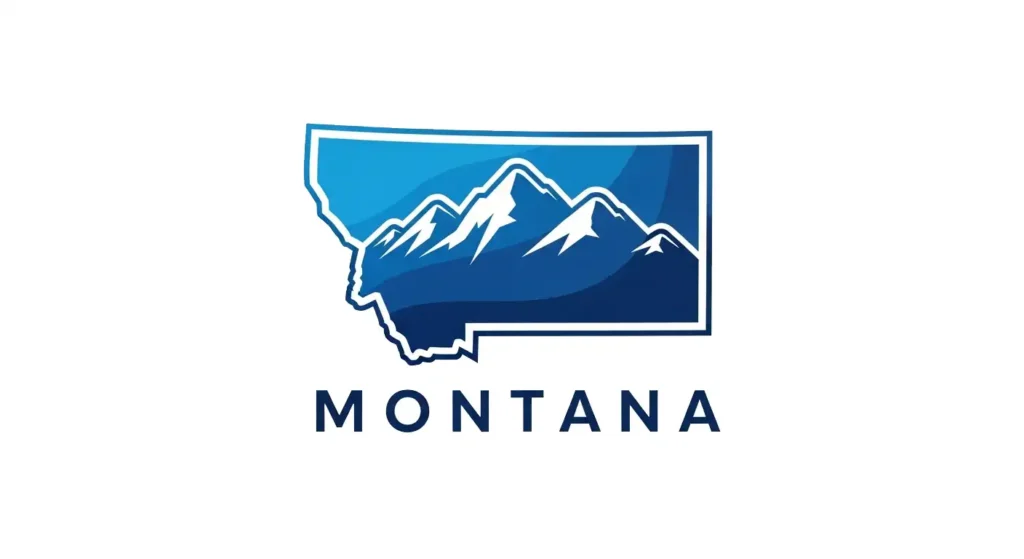Free Montana Payroll Tax Calculator

Montana Payroll Tax Calculator: A Step-by-Step Guide
Understanding your paycheck is essential, and our Montana Payroll Tax Calculator is designed to provide a clear estimate of your take-home pay. By following these straightforward steps, you can get a reliable approximation of your net earnings.
Step 1: Enter Your General Information
- Country: Ensure “United States” is selected. (This is pre-filled.)
- State: Choose “Montana” from the dropdown menu. (This is pre-filled.)
- Federal Filing Status: Select your current federal filing status (e.g., Single, Married Filing Jointly, Head of Household) from the dropdown. This should match the status you claim on your federal W-4 form.
- Pay Periods: Select how often you are paid (e.g., Weekly, Bi-Weekly (26), Monthly) from the dropdown menu. This is crucial for accurate calculations.
- Gross Pay: Enter your total earnings for the pay period before any taxes or deductions are taken out.
Step 2: Complete Your Montana-Specific Details
- Montana Filing Status: Your Montana filing status will typically align with your federal filing status. Ensure this is consistent with what you have selected for your federal status.
- Additional Montana Withholding (Optional): If you wish to have an extra amount withheld from your state taxes each pay period, enter that dollar amount here. You can find this information or make this election on your Montana Employee’s Withholding and Exemption Certificate (Form MW-4).
- Exemptions: If you are claiming an exemption from Montana withholding, you must indicate this on your Form MW-4. Please note that claiming an exemption from federal withholding does not automatically exempt you from Montana withholding.
Step 3: Review Your Estimated Net Pay
After inputting your information, the calculator will provide an estimate of your net pay based on the current Montana tax rates and the data you provided.
- To make any adjustments, simply change the information in the relevant fields and recalculate.
- To begin a new calculation, use the “New Calculation” button.
Important Considerations:
- This calculator provides an estimate for informational purposes. Your actual net pay may differ due to various factors, including pre-tax deductions for benefits like health insurance or retirement plans (e.g., 401(k)), and any updates to tax legislation.
- It is highly recommended to keep your federal Form W-4 and your Montana Form MW-4 updated with your employer to ensure the most accurate tax withholding from your paychecks.
- As of recent changes, Montana’s withholding calculations are now more closely aligned with the federal system and no longer use state-specific allowances. The primary factors are your filing status and any additional withholding you elect on your Form MW-4.
Found our Free Montana Payroll Tax Calculator useful? Bookmark and share it.
Montana Payroll Tax: 2025-2027
Executive Summary & Strategic Overview
This report provides a comprehensive analysis of the payroll tax landscape for employers in Montana for the 2025 calendar year, with a forward-looking perspective on legislative and economic trends extending through 2027. The payroll environment in Montana is defined by three core employer obligations: State Income Tax Withholding (SITW), State Unemployment Insurance (SUI), and mandatory Workers’ Compensation coverage. Notably absent are any local-level payroll taxes or state-mandated taxes for paid family, medical, or sick leave programs, a distinction that offers significant administrative simplicity compared to other states.
For 2025, employers must navigate several key parameters. Montana’s SITW system remains a progressive, two-bracket structure with rates of 4.7% and 5.9%. A pivotal administrative change is the full implementation of the updated Form MW-4, which eliminates withholding allowances in favor of a filing status-based calculation, placing a greater onus on employees to ensure accuracy and on employers to manage the transition.
The State Unemployment Insurance system reflects Montana’s recent economic strength. For 2025, the SUI taxable wage base has increased to $45,100 per employee. However, due to a healthy UI Trust Fund, tax rates are determined by the most favorable schedule, with rates for experienced employers ranging from 0.00% to 6.12%. New employer rates are assigned by industry, generally starting between 1.0% and 1.3%.
Looking beyond 2025, the Montana Legislature has enacted a clear, multi-year plan to reduce income tax rates, with the top rate scheduled to fall to 5.65% in 2026 and further to 5.4% in 2027. This move positions Montana to be more competitive with its regional neighbors, particularly Idaho and the tax-free state of Wyoming. However, the sustainability of these cuts is contingent upon continued economic stability. Employers must therefore remain vigilant, not only in managing current compliance but also in monitoring the economic indicators that will shape future tax policy. This report provides the detailed data and strategic context necessary for effective planning, compliance, and financial management in this dynamic environment.
Montana State Income Tax Withholding (SITW)
An employer’s primary state-level payroll duty in Montana is the accurate withholding and remittance of state income tax. This is a foundational legal requirement with significant fiduciary responsibility attached.
Core Obligation and Scope
Under Montana law, every employer that pays wages for services performed within the state is required to register with the Montana Department of Revenue (DOR), withhold state income tax from those wages, and remit the funds to the state. This obligation is not contingent on the employer having a physical office or facility in Montana; it extends to any business with employees working remotely from a location within the state's borders.
Trust Tax Liability: The state designates withheld funds as a "trust tax." This classification carries significant weight, as it establishes personal liability for the business owner or responsible corporate officers. Should the business fail to properly deduct and pay the tax, these individuals can be held personally accountable for the full amount, including penalties and interest.
2025 Tax Rate Structure and Calculation
For the 2025 tax year, Montana employs a progressive, two-bracket income tax system. The amount of tax to be withheld is a function of the employee's gross taxable wages for the pay period, their pay frequency, and their designated filing status.
| Filing Status | Annualized Income Bracket | Tax Calculation Formula |
|---|---|---|
| Single / Married Filing Separately / Married Filing Jointly (both working) | $0 - $36,100 | 4.70% of excess over $15,000 |
| Single / Married Filing Separately / Married Filing Jointly (both working) | $36,100 or greater | $992 + 5.90% of excess over $36,100 |
| Married Filing Jointly / Qualifying Widower | $0 - $72,200 | 4.70% of excess over $30,000 |
| Married Filing Jointly / Qualifying Widower | $72,200 or greater | $1,983 + 5.90% of excess over $72,200 |
| Head of Household | $0 - $54,200 | 4.70% of excess over $22,500 |
| Head of Household | $54,200 or greater | $1,490 + 5.90% of excess over $54,200 |
The 2025 Form MW-4 and Its Critical Implications
A pivotal change affecting all Montana employers in 2025 is the updated Montana Employee's Withholding Allowance and Exemption Certificate (Form MW-4). This form redesign fundamentally alters how withholding is calculated.
Elimination of Allowances
The most significant change is the complete removal of withholding allowances. The new system bases the calculation solely on the employee's filing status and any additional dollar amount they elect to have withheld. This change aligns Montana's form more closely with the federal Form W-4 but increases the risk of inaccurate withholding for employees with complex financial situations.
The Default Status Rule
The updated MW-4 introduces a critical default provision. If a new employee fails to submit a completed Form MW-4, the employer is legally required to withhold taxes as if the employee is single. This status has the narrowest tax brackets, resulting in the highest level of withholding. Proactively ensuring every new hire completes Form MW-4 is essential for maintaining employee morale.
Administrative Requirements
Employers must submit any new or updated Form MW-4 where an employee claims an exemption from withholding to the Department of Revenue. This must be done electronically via the TransAction Portal (TAP) by the last day of the payroll period in which the form was received.
Withholding on Supplemental Wages
For supplemental wage payments such as bonuses or commissions, employers have two calculation options if paid separately from regular wages:
- Aggregate the supplemental pay with regular wages, calculate the tax on the total, and subtract tax already withheld.
- Withhold at a flat rate of 5.0% on the supplemental wage payment.
Exemptions and Reciprocity
Montana law provides several exemptions from state income tax withholding.
- North Dakota Reciprocity: Montana has a tax reciprocity agreement with North Dakota. A Montana employer should not withhold Montana income tax from a North Dakota resident who has properly completed Form MW-4 to claim this exemption.
- Other Key Exemptions: Exemptions are available for enrolled members of a Native American tribe living and working on their home reservation, certain nonresident military spouses, and certain nonresident interstate carrier employees.
- 30-Day Nonresident Exemption: An exemption exists for nonresident employees working in Montana for fewer than 30 days, but this does not apply to employees in construction, professional sports, or entertainment.
Montana State Unemployment Insurance (SUI)
State Unemployment Insurance (SUI) is a mandatory, employer-funded tax that provides temporary wage replacement benefits to individuals who become unemployed through no fault of their own. This program is administered by the Montana Department of Labor & Industry (DLI).
Employer Liability and Taxable Wage Base
SUI tax is an employer-only responsibility in Montana. For the 2025 calendar year, the Montana SUI taxable wage base is $45,100. This figure is the maximum amount of an employee's annual earnings upon which an employer must pay SUI tax, and it represents a notable increase from the 2024 base of $43,000.
2025 Rate Structure
Montana's SUI tax rates are experience-rated. Due to a healthy UI Trust Fund, Montana is operating under Rate Schedule 1 for 2025, which is the most favorable schedule available.
- New Employers: Rates are assigned by industry, generally ranging from 1.0% to 2.0%. The rate for new construction businesses is 2.0%.
- Experienced Employers: Rates range from 0.00% to 6.12%, based on their individual claims history.
- Administrative Surcharge: All employers must pay an additional Administrative Fund Tax (AFT) surcharge of 0.18%.
| Component | 2025 Detail |
|---|---|
| Taxable Wage Base | $45,100 per employee |
| New Employer Rate (General) | 1.0% - 2.0% (varies by industry) |
| New Employer Rate (Construction) | 2.0% |
| Experienced Employer Rate Range | 0.00% - 6.12% |
| Administrative Fund Tax (AFT) | 0.18% |
| Total Rate Range (Experienced) | 0.18% - 6.30% |
| Voluntary Contributions | Not Permitted |
Mandatory Workers' Compensation Insurance
Workers' compensation (WC) is a mandatory insurance program providing wage replacement and medical benefits to employees injured on the job. In return, employers are protected from most employee lawsuits related to workplace injuries.
Legal Mandate and Coverage Options
Nearly every business with one or more employees in Montana must secure a WC policy before work begins. Non-compliance leads to severe penalties. Employers have several options for obtaining coverage:
- Private Insurance Carriers: Purchase a policy from an authorized private insurance company.
- Montana State Fund: A state-chartered, competitive insurance carrier that also serves as the insurer of last resort.
- Self-Insurance: Large, financially stable employers can apply to the state for permission to self-insure.
Determining Premiums and State-Mandated Surcharges
WC premiums are based on payroll, industry risk, and a business's claims history (Experience Modification Rate or EMR). A critical component of the total cost is the set of mandatory state surcharges levied on all WC premiums.
| Surcharge Name | FY 2025 Rate |
|---|---|
| Administration Fund Premium Surcharge | 0.8925% |
| Subsequent Injury Fund Premium Surcharge | 0.4576% |
| Occupational Safety & Health (OSHA) Fund Premium Surcharge | 0.3902% |
Exemptions and Contractor Classification
A significant compliance risk involves the misclassification of workers as independent contractors to avoid paying WC premiums. A worker must meet a strict legal test to be classified as an independent contractor, and many are required to obtain an Independent Contractor Exemption Certificate (ICEC) from the state. Misclassification can expose an employer to the severe legal and financial penalties of being uninsured.
Federal Tax Obligations in the Montana Context
Montana employers are subject to the same federal payroll taxes as all other U.S. employers, primarily FICA and FUTA, which are administered by the IRS.
FICA (Federal Insurance Contributions Act)
FICA is a mandatory federal tax shared by employees and employers to fund Social Security and Medicare.
- Social Security: For 2025, the rate is 6.2% for both the employee and employer on wages up to the annual limit of $176,100.
- Medicare: The rate is 1.45% for both the employee and employer, with no wage limit.
- Additional Medicare Tax: An extra 0.9% is withheld from employee wages exceeding $200,000 (for single filers). This is an employee-only tax.
FUTA (Federal Unemployment Tax Act)
FUTA is an employer-only federal tax that funds federal oversight of state unemployment programs.
The FUTA Credit: The nominal FUTA rate is 6.0% on the first $7,000 of each employee's wages. However, employers who pay their state unemployment (SUI) taxes in full and on time receive a tax credit of up to 5.4%. This effectively reduces the FUTA tax rate to 0.6%. Missing a Montana SUI payment deadline can result in the loss of this credit, increasing the federal unemployment tax liability tenfold.
Administrative and Compliance Framework
Navigating Montana's payroll tax system requires understanding the procedures of the Department of Revenue (DOR) for income tax and the Department of Labor & Industry (DLI) for unemployment insurance.
Step-by-Step Employer Registration
A business hiring its first employee in Montana must complete a two-part registration:
- Withholding Tax Account (DOR): Register electronically through the DOR's TransAction Portal (TAP) to get a Withholding Account Number.
- Unemployment Insurance Account (DLI): Register online via the DLI's UI eServices for Employers portal to get a UI Employer Account Number (EAN).
Filing and Payment Schedules
State Income Tax Withholding (SITW)
The DOR assigns a filing frequency based on the amount of tax withheld. New employers are assigned a monthly schedule.
| Schedule Name | Lookback Period Liability | Payment Due Date |
|---|---|---|
| Annual | $1,199 or less | January 31 of the following year |
| Monthly | $1,200 to $11,999 | By the 15th of the following month |
| Accelerated | $12,000 or more | Follows the federal deposit schedule |
State Unemployment Insurance (SUI)
SUI wage reports (Form UI-5) and tax payments are due quarterly. Electronic filing is mandatory.
Key Forms and Annual Reconciliation
Employers have critical ongoing and annual reporting duties.
| Form Name/Number | Purpose | Key Deadline(s) |
|---|---|---|
| Form MW-4 | Employee's certificate for state income tax withholding. | Collect from new hires; submit exempt forms to DOR by end of pay period. |
| Form UI-5 | Quarterly Unemployment Insurance Tax and Wage Report. | Due quarterly (April 30, July 31, Oct 31, Jan 31). |
| Form MW-3 | Annual reconciliation of all state income tax withheld. | January 31. |
| Form W-2 | Annual statement of employee wages and taxes withheld. | Provide to employees and file with DOR by Jan 31. |
The Broader Landscape: Local Taxes and Other Mandates
A key feature of Montana's payroll environment is not just which taxes apply, but also which do not.
Absence of Local Payroll Taxes
One of the most significant advantages for Montana employers is the complete absence of local income or payroll taxes. The system is centralized at the state level, which dramatically simplifies payroll administration and reduces compliance costs.
Absence of State-Mandated Leave Taxes
Montana does not have a state-mandated program for Paid Family and Medical Leave (PFML) or universal Paid Sick Leave (PSL). This means there are no state payroll taxes to fund such benefits. This shifts the provision of these benefits into the realm of competitive compensation, allowing employers who offer private leave plans to gain an advantage in attracting and retaining talent.
Local Minimum Wage Ordinances
While there are no local payroll taxes, employers must be aware of local ordinances impacting gross wages. For example, the city of Missoula has established its own minimum wage rates, which are higher than the state minimum and must be followed by employers operating there.
Strategic Outlook: 2026 and Beyond
Strategic planning requires a forward-looking analysis of legislative trends and economic forecasts that will shape tax obligations in the coming years.
Legislative Trajectory: A Multi-Year Path of Income Tax Reduction
The Montana Legislature has already set a clear path for income tax reductions, providing employers with rare predictability.
- Tax Year 2026: The top income tax rate will decrease from 5.9% to 5.65%.
- Tax Year 2027: The top rate will be reduced again to 5.4%.
These cuts are a strategic move to make Montana more competitive with neighboring states like Idaho (flat 5.3% tax) and Wyoming (no income tax). Employers must plan for payroll system updates in two consecutive years.
Economic Context and Fiscal Health
The state's ability to sustain these tax cuts is tied to its economic performance. While Montana's economy has been strong, growth is moderating. Employers should monitor the state's fiscal health, as economic shifts could impact future tax policy.
Regional Competitive Analysis
A business's location decision is often influenced by a comparison of labor and tax costs.
| State | State Income Tax System | SUI Taxable Wage Base | SUI New Employer Rate | Workers' Comp System |
|---|---|---|---|---|
| Montana | Progressive: 4.7% - 5.9% | $45,100 | 1.0% - 2.0% (by industry) | Competitive |
| Idaho | Flat: 5.3% | $55,300 | 1.0% | Competitive |
| Wyoming | None | $32,400 | Varies by industry (high) | Competitive |
| North Dakota | Progressive: 1.1% - 2.9% | $45,100 | 1.03% | Monopolistic |
Comprehensive Recommendations for Montana Employers
To effectively manage payroll tax obligations, employers should adopt a multi-faceted approach.
Immediate Actions for 2025
- Conduct a Payroll System Audit: Immediately verify that your payroll system is updated with 2025 SITW tables, the $45,100 SUI wage base, your current SUI rate, and correct WC surcharge rates.
- Manage the Form MW-4 Transition: Implement a mandatory process to collect the new 2025 Form MW-4 from every new hire. Urge current employees to review their withholding and submit an updated form if needed.
Administrative and Compliance Hygiene
- Establish a Master Compliance Calendar: Maintain a detailed calendar of all payroll tax deadlines, including quarterly SUI filings and the annual Form MW-3 reconciliation on January 31.
- Ensure Proper Portal Access: If using a third-party payroll provider, confirm they have the necessary TPA access on both the DOR's TAP and the DLI's UI eServices portals.
- Rigorously Review Worker Classifications: Periodically audit independent contractor status to mitigate the significant risks of misclassification.
Strategic and Forward-Looking Planning
- Incorporate Future Tax Changes: Update multi-year budgets to reflect the legislated income tax rate reductions for 2026 and 2027.
- Leverage Safety as a Financial Strategy: Treat your workplace safety program as a direct investment in reducing workers' compensation premiums.
- Benchmark Employee Benefits: In the absence of state-mandated leave, use a competitive private benefits package as a powerful tool for talent acquisition and retention.
- Monitor State Economic and Fiscal Health: Stay informed about the state's economic trajectory to anticipate potential future changes to tax policy.
Simplify Your Montana Payroll
Navigating Montana's payroll tax landscape can be complex. TimeTrex offers a comprehensive payroll solution designed to handle state-specific requirements, from withholding calculations to automated tax filings. Ensure compliance, save time, and focus on what you do best—running your business.
Learn More About TimeTrex PayrollOther Payroll Tax Calculators
Loading other available calculators...
Disclaimer: The content provided on this webpage is for informational purposes only and is not intended to be a substitute for professional advice. While we strive to ensure the accuracy and timeliness of the information presented here, the details may change over time or vary in different jurisdictions. Therefore, we do not guarantee the completeness, reliability, or absolute accuracy of this information. The information on this page should not be used as a basis for making legal, financial, or any other key decisions. We strongly advise consulting with a qualified professional or expert in the relevant field for specific advice, guidance, or services. By using this webpage, you acknowledge that the information is offered “as is” and that we are not liable for any errors, omissions, or inaccuracies in the content, nor for any actions taken based on the information provided. We shall not be held liable for any direct, indirect, incidental, consequential, or punitive damages arising out of your access to, use of, or reliance on any content on this page.
Trusted By
Trusted by 3.2M+ Employees: 21 Years of Service Across Startups to Fortune 500 Enterprises
Join our ever-growing community of satisfied customers today and experience the unparalleled benefits of TimeTrex.










Strength In Numbers
Join The Companies Already Benefiting From TimeTrex
Time To Clock-In
Start your 30-day free trial!
Experience the Ultimate Workforce Solution and Revolutionize Your Business Today
- Eliminate Errors
- Simple & Easy To Use
- Real-time Reporting

Saving businesses time and money through better workforce management since 2003.
Copyright © 2025 TimeTrex. All Rights Reserved.
